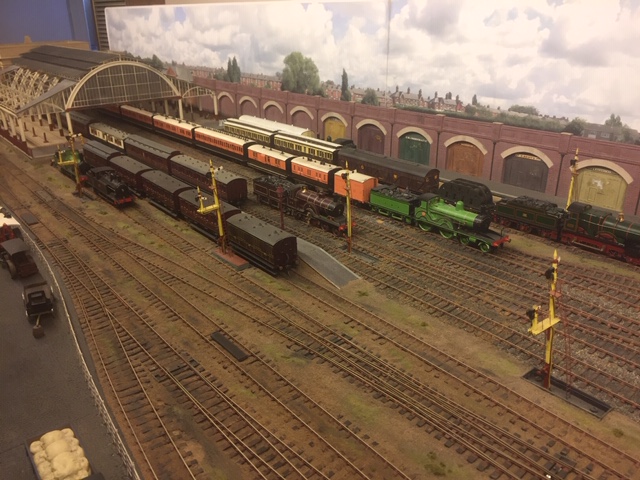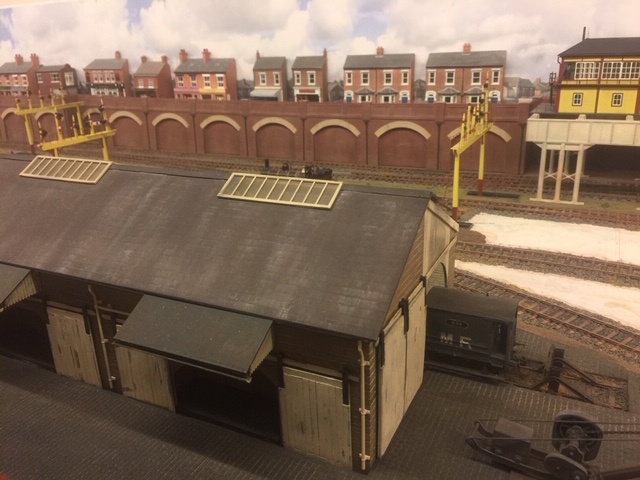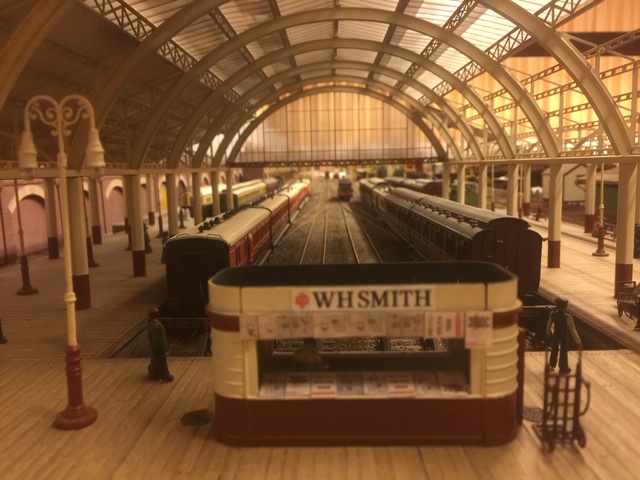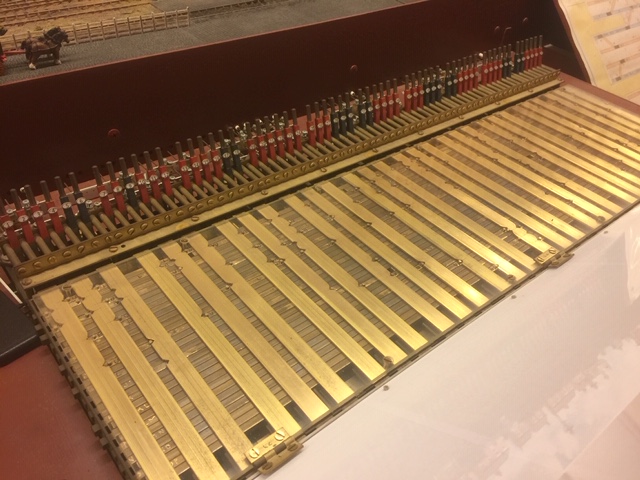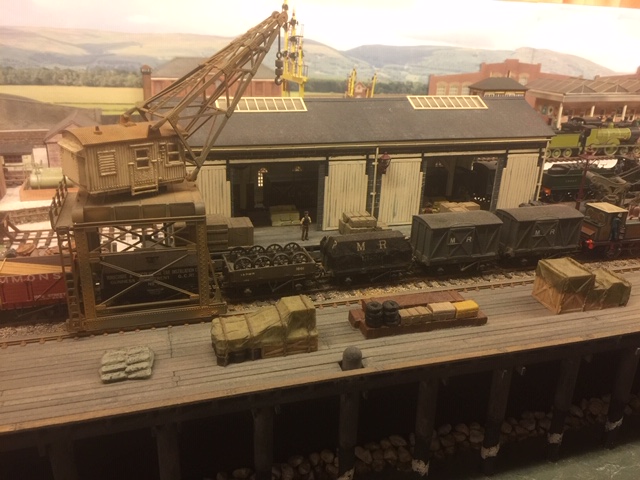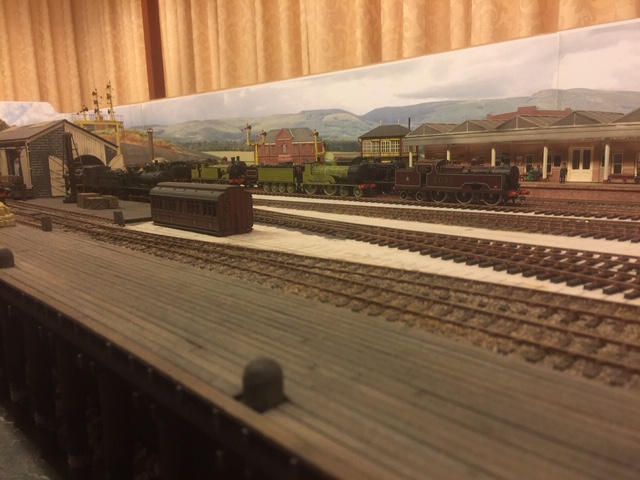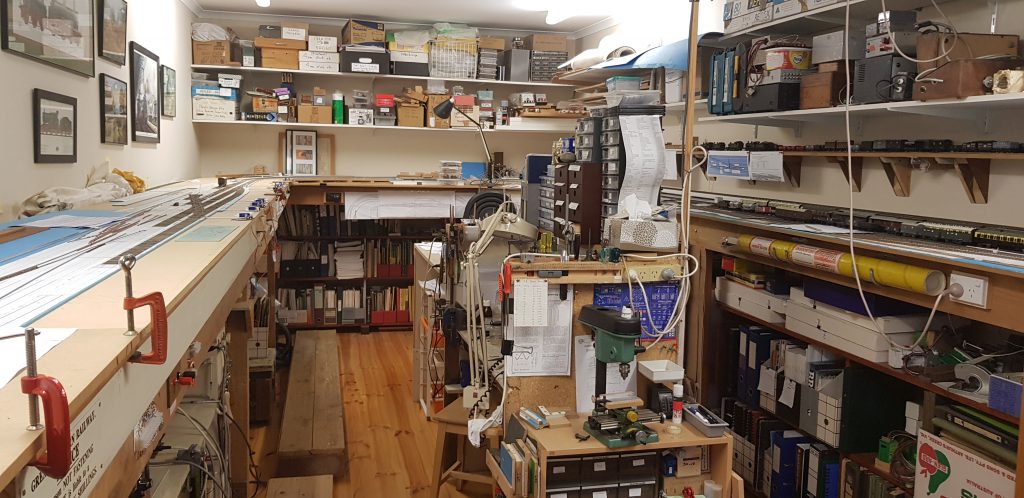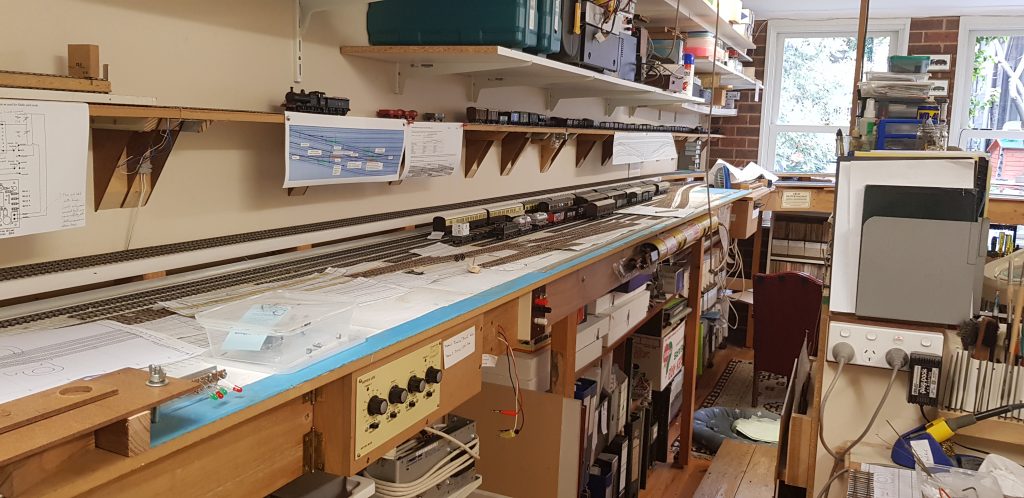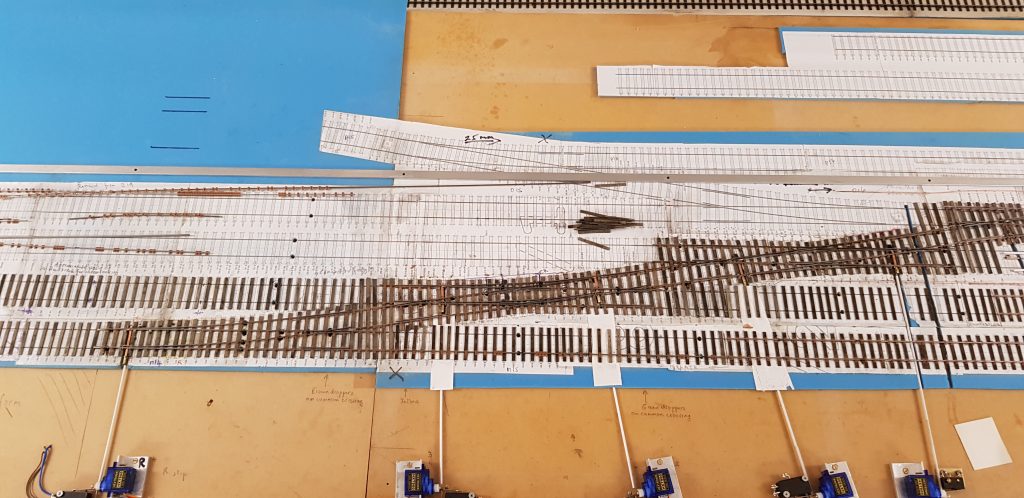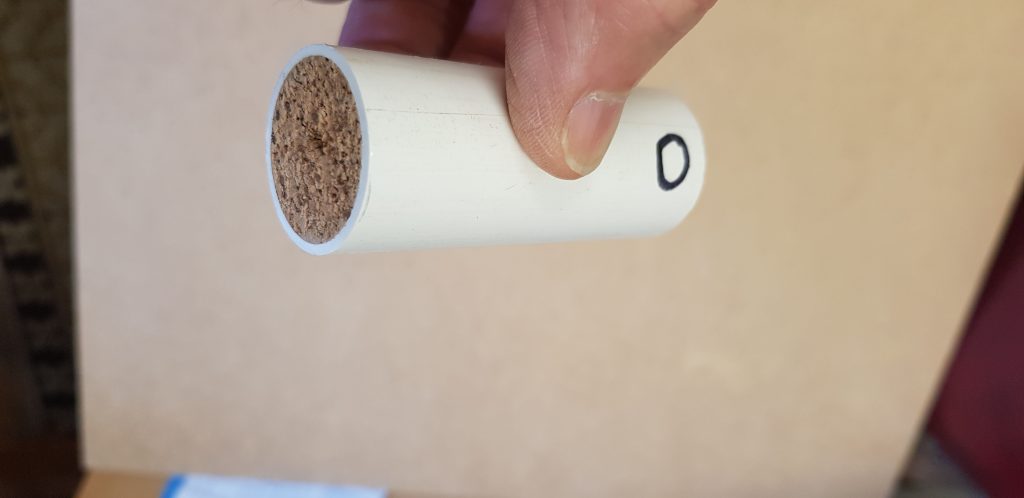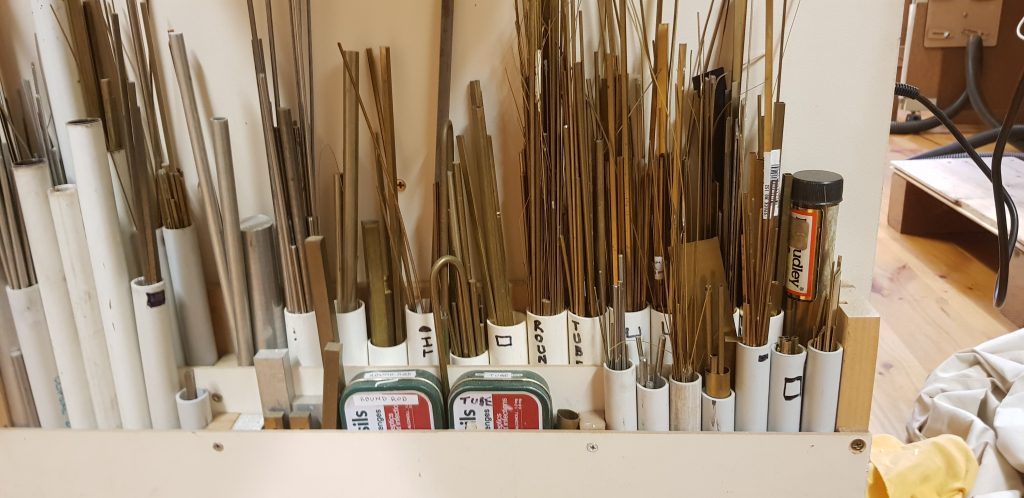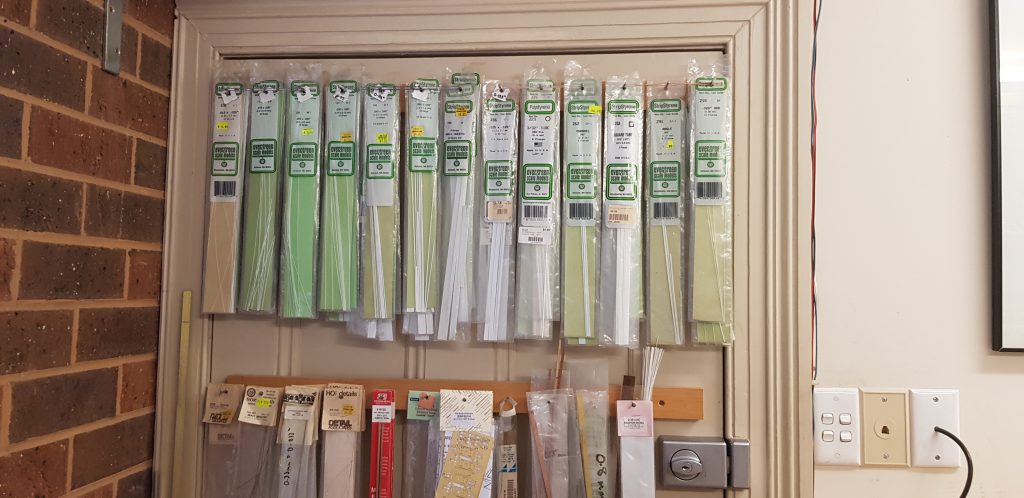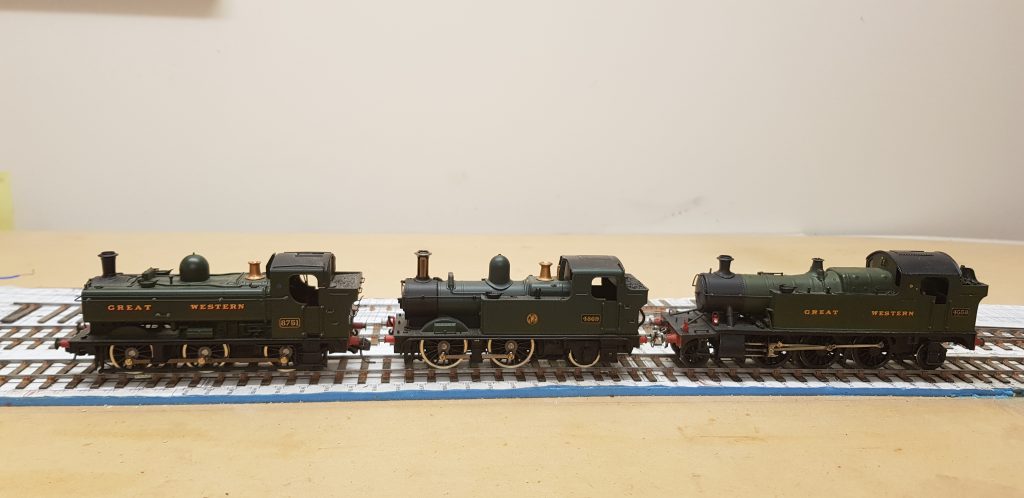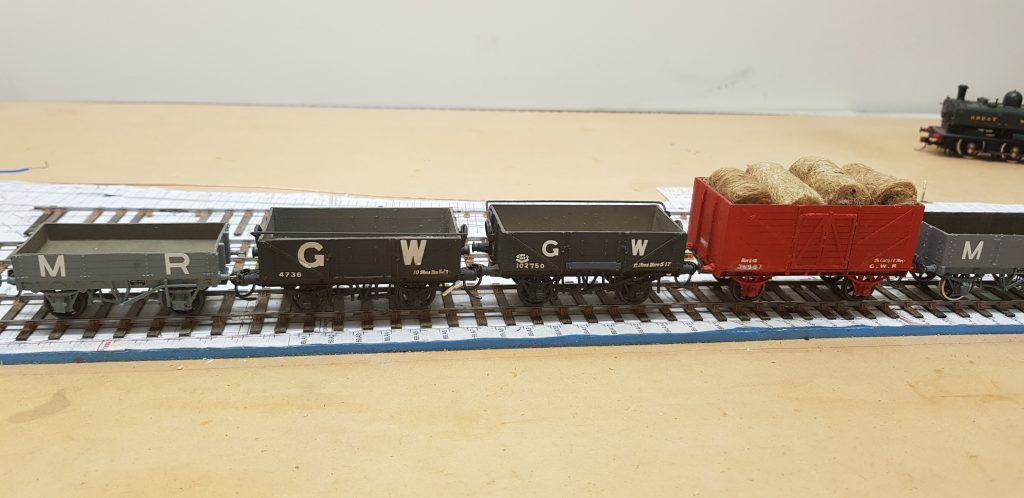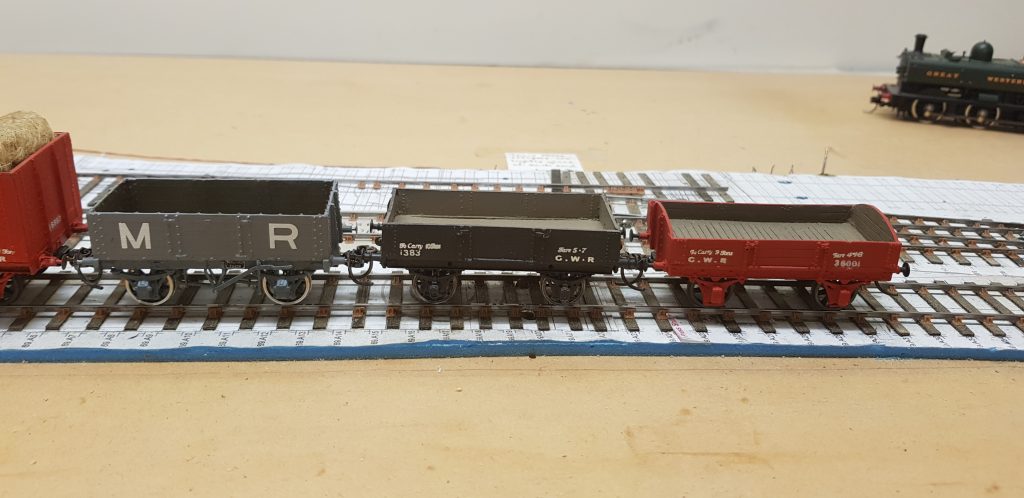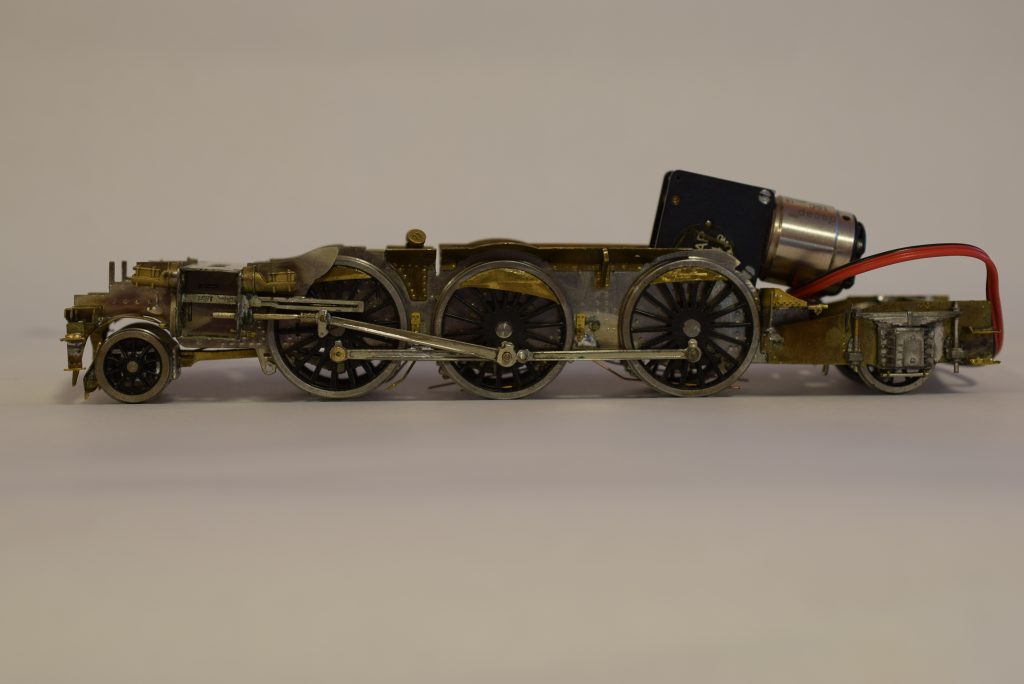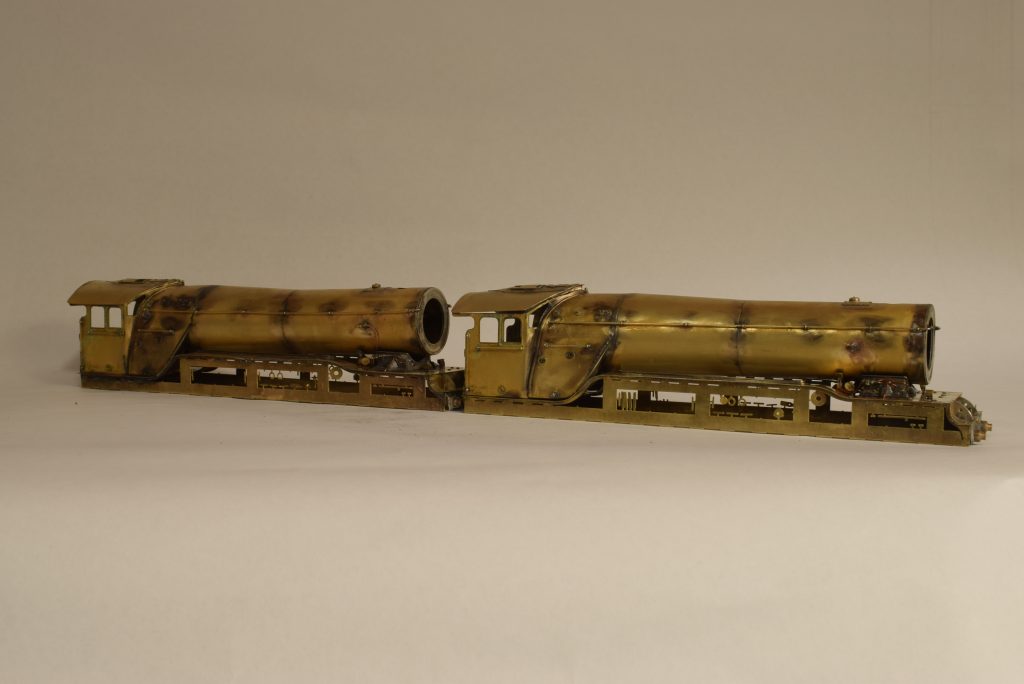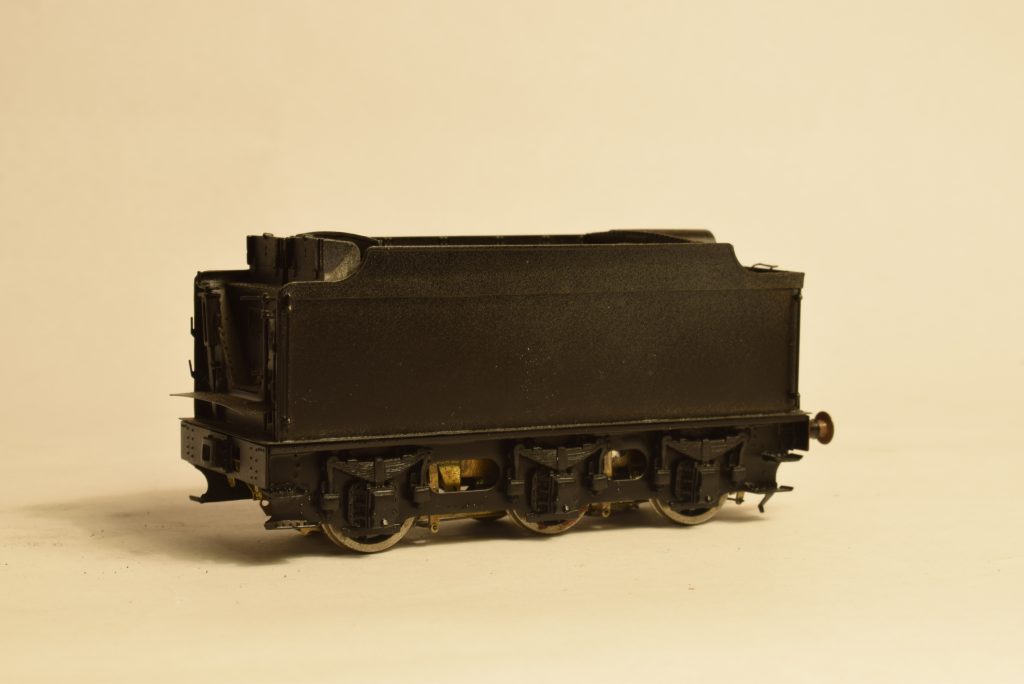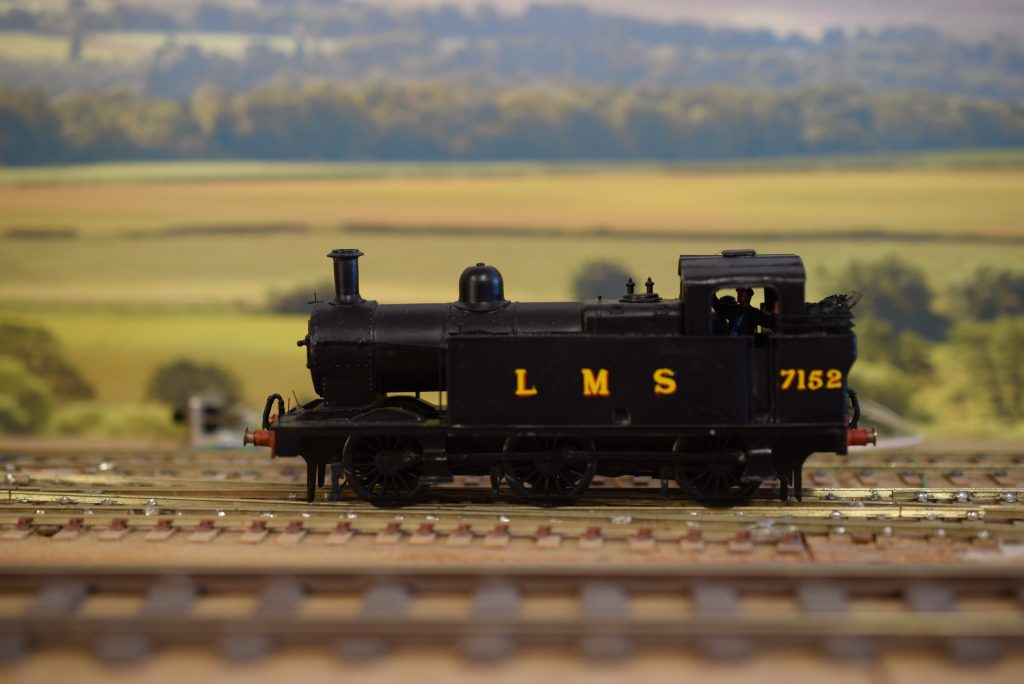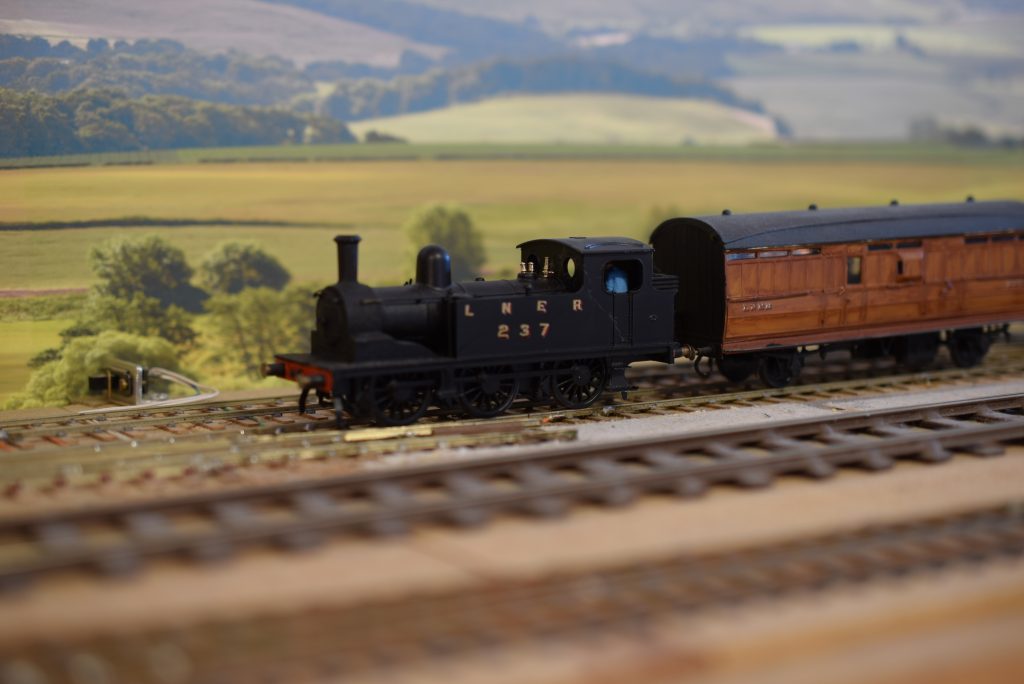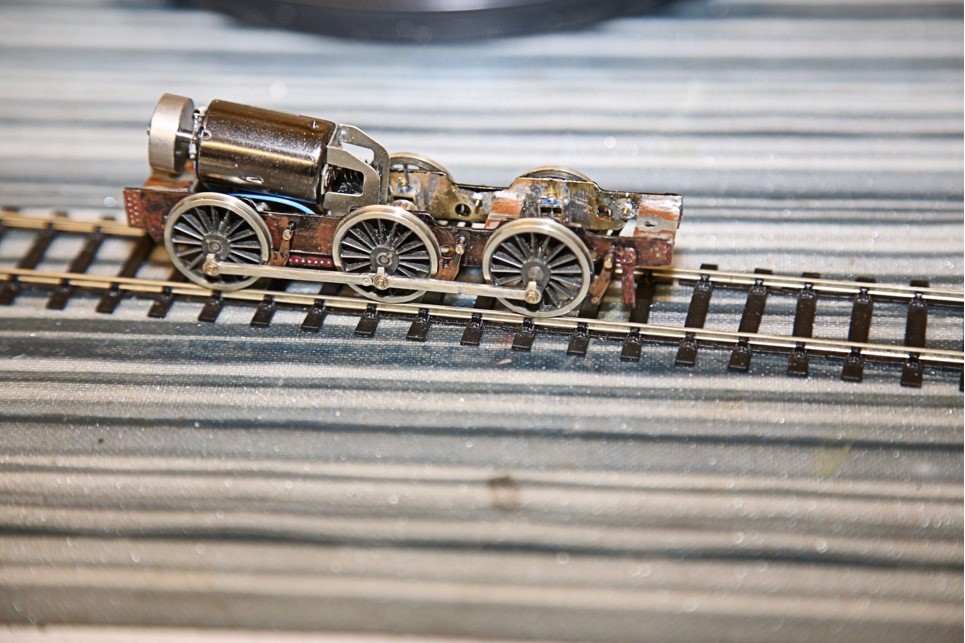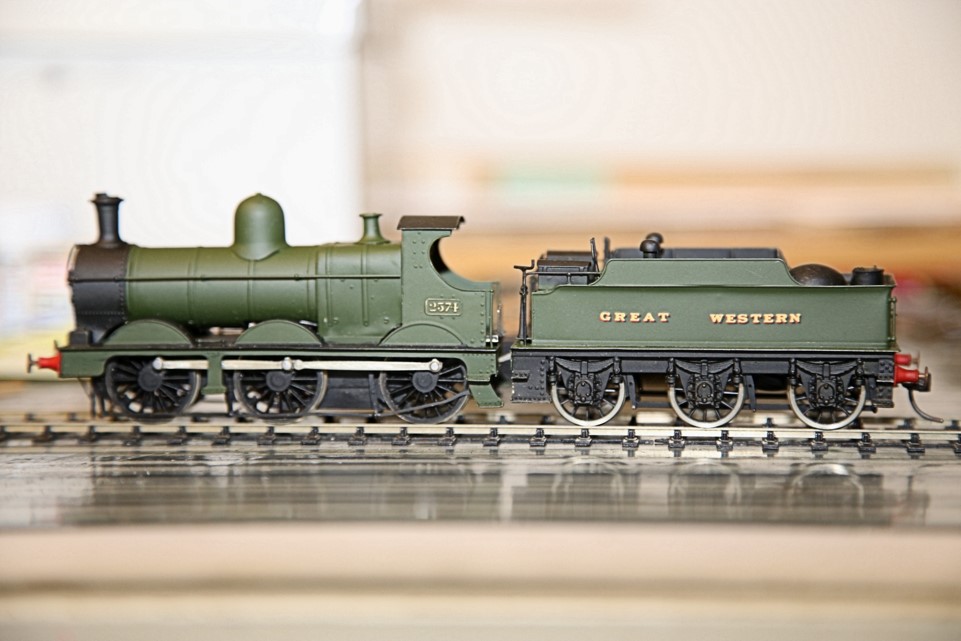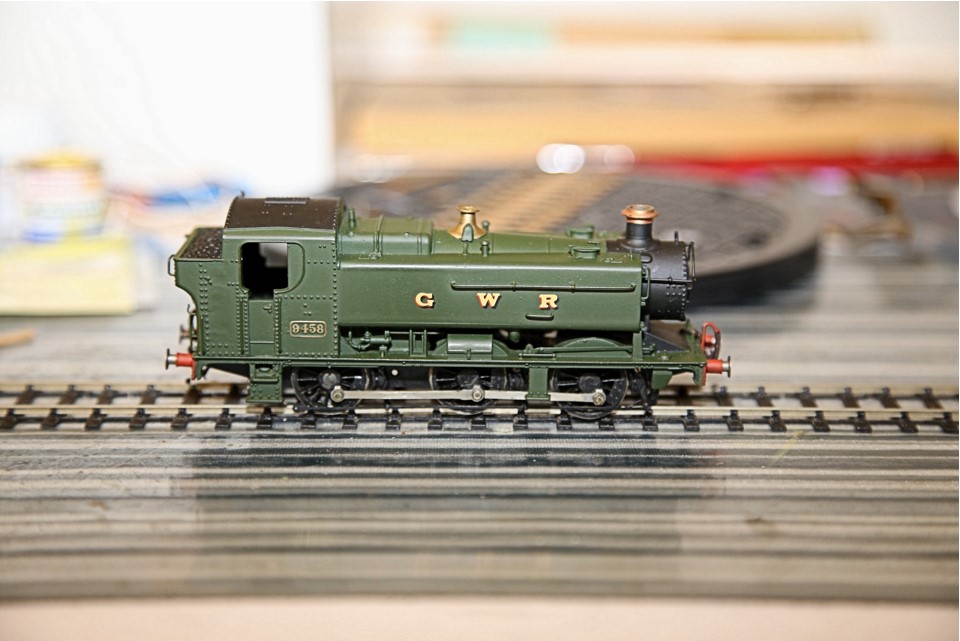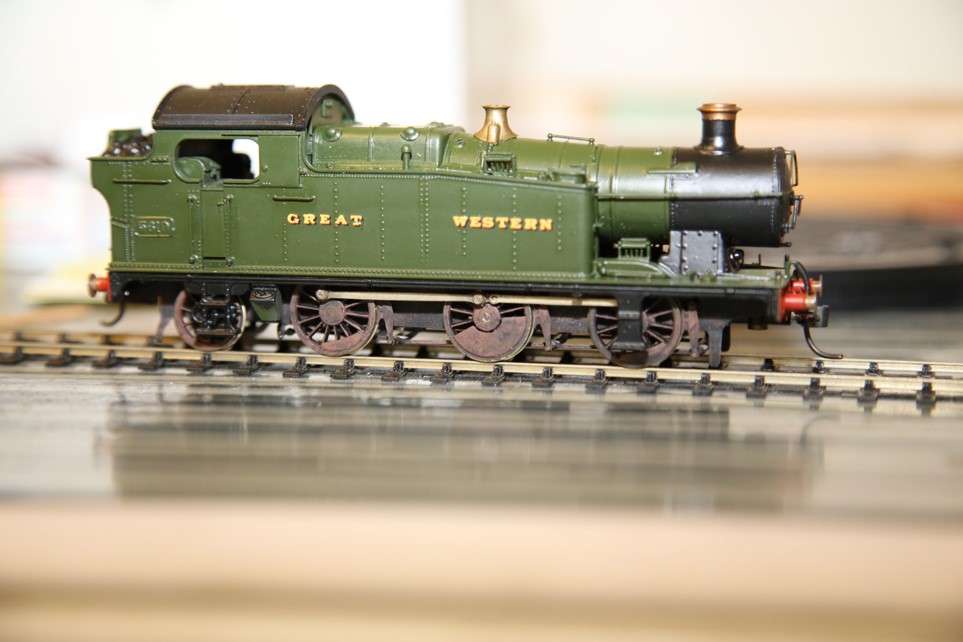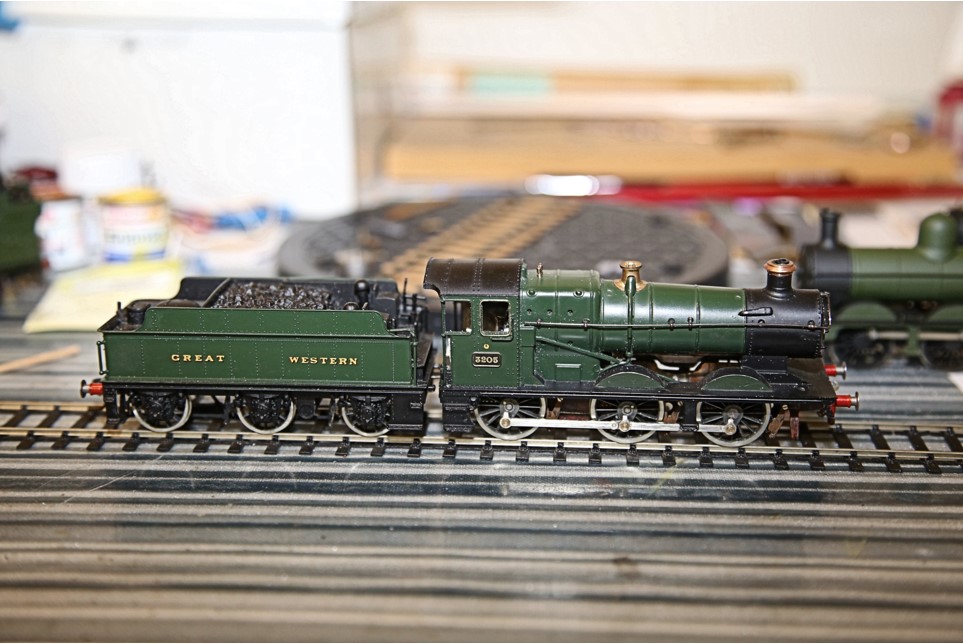The Melbourne Finescale Modellers Group
The Melbourne Finescale Modellers Group was founded in 1962 by two EM gauge modellers recently arrived from England, both of whom knew Ken Keyser who put them in touch with one another. Over the years the group has grown and now has members who model British outline in 00, EM, P4, S4, 0, S7 and 5” gauge.
The Group has always been informal with no Committee and no membership fee. There is an administrator who organises the meeting rota and manages communication. The Group is open to anyone with an interest in finescale modelling, loosely defined, and the railways of Great Britain.We meet once a month in members’ homes and are always pleased to welcome visitors, so anyone planning to visit Melbourne should get in touch. You can do this by posting on the Scalefour forum or by PM to dclift.
Here we present some work of the groups members.
Bruce Boldner
Bruce is a former Scalefour Society member who was seduced by the smell of steam and smoke some years ago. He is the only member of our group who actually has a working P4 layout, and very nice it is too. It is modelled on Bath, Green Park but features a variety of pre-grouping locomotives, an era of great appeal to Bruce. He recently finished a 5” gauge Midland Spinner and is currently constructing 4-2-2 “Great Northern” in the same scale
David Clift
David is the administrator of the Melbourne Finescale Modellers Group and is responsible for drawing up the annual rota of meetings. Unfortunately meetings are currently suspended due to the lockdown here in Melbourne.
He is an avid reader of the Scalefour Forum but an infrequent contributor. His main interest is the GWR from the early years of the twentieth century up until the mid 1930s. He started building his first P4 layout in about 1998 but it was dismantled before any significant progress had been made due to a move to Bangkok in 1999. 2006 saw the construction of a garage in the garden the new family home in Melbourne but there was a pressing need to renovate the house itself which had been allowed to deteriorate for over fifty years. Consequently it was another three years before the garage was partitioned to provide a 3.2 m x 8.1 m (10’6” x 26’7”) railway room which is fully insulated and, in winter, is often the warmest place to be. The car shares the other half of the garage with David’s workshop.
Baseboard construction commenced in 2009 and a Templot plan was drawn up. David decided to dive in at the deep end rather than experiment with a small shunting plank, so he started by building turnouts and laying track for a seven road fiddle yard. As can be seen in one of the photographs, the turnouts at one end are completed and laid. Those at the other are built but not yet installed because getting track laid all of the way round the room is a higher priority.
The layout will eventually be a looped figure of eight on two levels with a maximum gradient of 1:100 between levels. The two laps of the room are close to complete, thanks largely to pressure from group members who want a continuous run on which to test their locomotives. Meetings at David’s home always see members running their latest creations.
It is planned that the side of the room opposite the fiddle yard will be occupied by a station modelled roughly in the layout at Chipping Sodbury and Badminton on the GWR main line to South Wales. It is in this area that David is currently working, as can be seen in one of the photographs of the layout room. Track here is built with ply sleepers and functional chairs (two bolt, of course). Elsewhere, straight track is made up from C&L track bases while curved track is rivet and ply. All of the rail is steel which has not shown any tendency to rust except when too close to pva glue. It is not to difficult to solder using a flux of 5% phosphoric acid.
There has been some discussion on the forum recently regarding storage of Evergreen strip and brass sections so David has included three shots showing how he does it. Brass strip is stored in short pieces of electrical conduit or similar plastic tube, cut to a convenient length and one end sealed with a cork cut down from a wine bottle. This necessitates first finding an environmentally responsible way to dispose of the contents of the bottle. The first photograph shows a short storage tube labelled for storing short lengths of brass tube. The cork doesn’t look impervious to liquid, but it was! The second photograph shows the rack that holds the storage tubes, screwed to the side of his workbench where he would find it very difficult to impale himself. The third shows storage for Evergreen strip and other long thin items, based on an idea pinched from a now deceased member of the group. A length of 2” x 1” timber has holes drilled at 2.5” centres, an interference fit for a series of 2” nails, and screwed to a convenient vertical surface, in this case, the door to the room.
Doug Newton
Doug is a frequent contributor to the Scalefour Forum, most recently chronicling his struggles with a pair of Martin Finney LNER V2s. He has constructed a number locomotives and is has also embarked upon the construction of a layout on which to run them. The accompanying photographs show:
LNER J71 consisting of a Bachmann body on a Mainly Trains chassis with Alan Gibson wheels, a Mashima motor a London Road Models gearbox and Ultrascale gears;
An LMS Jinty which was started and subsequently abandoned by Melbourne Group member Paul Kehoe. Doug replaced the dome which was incorrect and then completed construction with Sharman wheels, a Portescap motor and an MJT Conversion kit;
A LNER GS tender which was started before the first V2 was commenced. The second tender will be completed in one move and then both of the locomotives and both of the tenders will all be painted in their Green LNER livery at the same time.
Two V2 bodies which are being built in parallel. The boilers have not been fixed down at the front yet. (hence they are sticking up). Doug acquired the kits came to me about five years or so apart. Because the first was not all that advanced as received, when the second came along he decided to save time building the two in parallel. It has been true to say that this has sped up the process no end as it has been effectively 12 months since the second kit appeared. The time saving is chiefly in only having to identify the parts and figuring out how they fit together only once;
A V2 chassis assembled as MartinFinney intended, with Portescap motor. The second V2 will have a Highlevel gearbox and Mashima motor.
John Gleeson
John is an occasional contributor to the Scalefour Forum. His interests centre on the railways around Lincolnshire. He currently has several projects underway:
Completing coaches from the estate of the late Bill Gorman;
Upgrading some old class B tank wagon kits, most of which he is replacing with Masokits upgrading etches. The wheels are sprung and sprung buffers will be fitted. John is planning a rake of these;
Completing a John Fozard kit of a six-wheeled GUV LNER BZ, also acquired from the late Bill Gorman. It just needs the roof fitting and painting;
Building a DJH Raven A2; 2404 was rebuilt by Gresley with an A1 boiler. This has a SE Finecast modified boiler, Nick Easton footplate and cab etches. (The cast DJH footplate effort was discarded), scratch and bought in components;
Building a Craftsman O2 with a Portescap motor, turned brass fittings and sprung buffers;
Building a Dave Bradwell chassis for his B1 which will become 61247, “Viscount Ridley”;
Building a Gresley 52’6” corridor luggage van from a RDEB body kit and components from MJT and other sources.
John’s workbench;
An updated Hornby GWR brake third with correct bogies and Kaydee couplings;
a K’s Siphon F with sprung buffers, detailed underframe, bowed roof repaired and inner roof fitted
Photographs of two B sets running on sprung P4 bogies and built by Brian Mosby of Mozzer Models from Nick Easton etches produced by PPD.
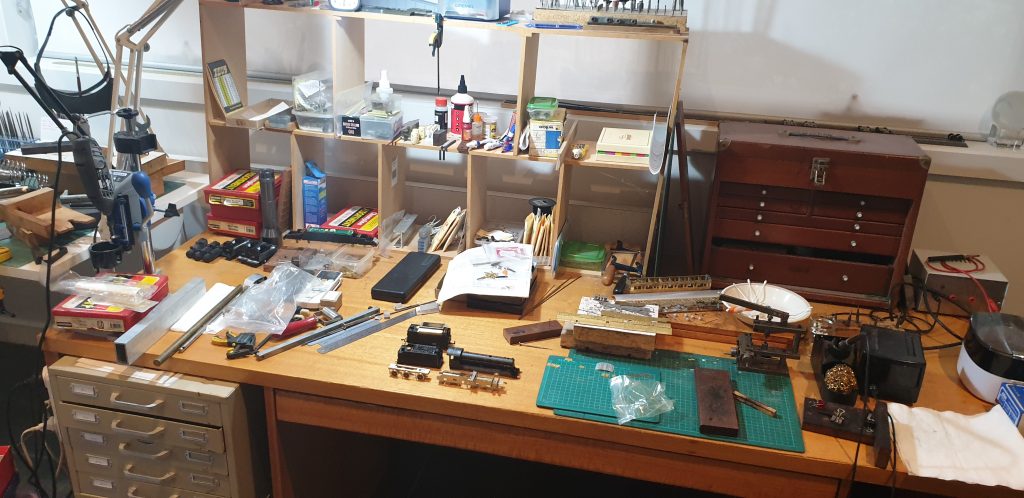
Michael Godfrey
Michael would be well known to readers of Scalfour News where he has published several articles on turnout construction. He is currently applying his considerable talent to building a model of a North Eastern Railway “birdcage ” brake van and the picture shows the chassis of the brake van on an incline with the screw brakes on. Hopefully, the article on the construction of these working brakes will soon be published in Scalefour News.
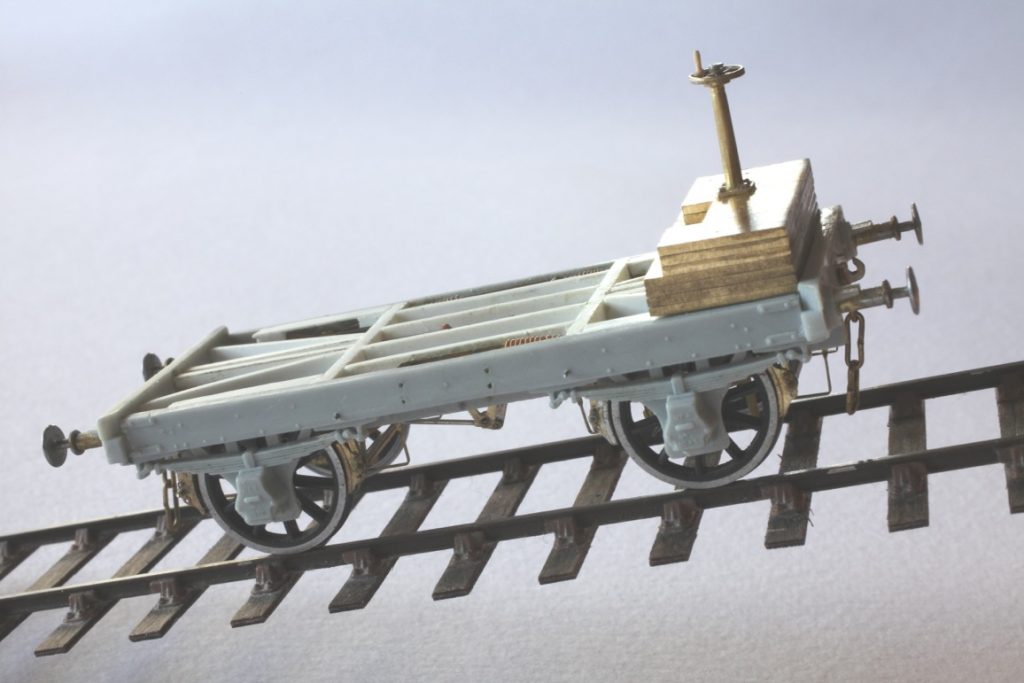
Ray Boxshall
Ray has been modelling in P4 for many years, but his working layout was the victim of a house move several years ago. Since then he has been, amongst other things, working on a scratchbuilt chassis for his Collett goods and, despite difficulties along the way he now has a working locomotive, though more fettling is needed to ensure that it works as well in reverse as it does when moving forwards. Ray builds all of his chassis with split frames, some from kits and others from scratch.

